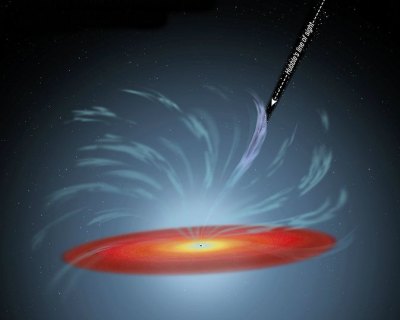Scientists shed light on black holes

Using data from several NASA and European Space Agency space observatories, an international team of astronomers has documented unexpected behavior from the supermassive black hole at the heart of galaxy NGC 5548.
After NASA's Hubble Space Telescope observed the galaxy in June 2013, the international research team detected a stream of gas flowing rapidly out from the galaxy's supermassive black hole, blocking 90 percent of its emitted X-rays.
"The data represented dramatic changes since the last observation with Hubble in 2011," said Gerard Kriss of the Space Telescope Science Institute in Baltimore, in a NASA news release. "I saw signatures of much colder gas than was present before, indicating that the wind had cooled down due to a significant decrease in X-ray radiation from the galaxy's nucleus."
The discovery was made during an intensive observing campaign that included NASA and European Space Agency equipment.
After combining and analyzing data, the team was able to put together the pieces of the puzzle. Supermassive black holes in the nuclei of active galaxies expel large amounts of matter through powerful winds of ionized gas. For instance, the persistent wind of NGC 5548 reaches velocities exceeding 621 miles (approximately 1,000 kilometers) a second. But now a new wind has arisen, much stronger and faster than the persistent wind.
"These new winds reach speeds of up to 3,107 miles (5,000 kilometers) per second, but are much closer to the nucleus than the persistent wind," said lead scientist Jelle Kaastra of the SRON Netherlands Institute for Space Research.
The newly discovered gas stream in NGC 5548 provides the first direct evidence of a shielding process that accelerates the powerful gas streams, or winds, to high speeds. These winds only occur if their starting point is shielded from X-rays.
It appears the shielding in NGC 5548 has been going on for at least three years, but just recently began crossing the observation team's line of sight.
"There are other galaxies with similar streams of gas flowing outward from the direction of its central black hole, but we've never before found evidence that the stream of gas changed its position as dramatically as this one has," Kriss said. "This is the first time we've seen a stream like this move into our line of sight. We got lucky."
Researchers also deduced that in more luminous quasars the winds may be strong enough to blow off gas that otherwise would have become "food" for the black hole, thereby regulating both the growth of the black hole and that of its host galaxy.
These results are being published online in the June 19 issue of Science Express.
Related:
NASA telescope measures spin of black hole
Astronomers using NASA observatory make gamma-ray study of gravitational lens
